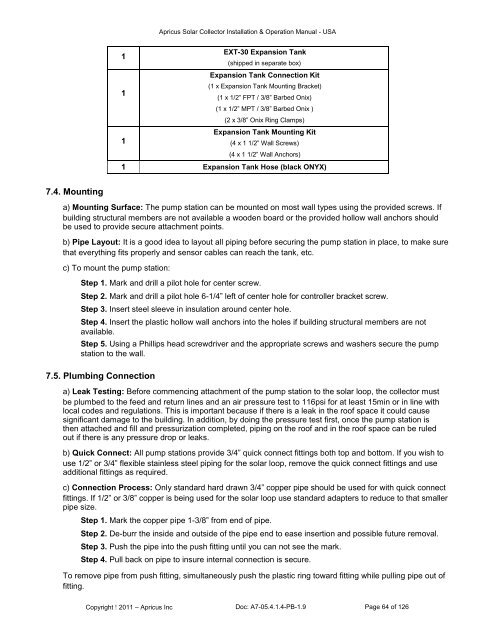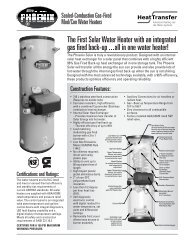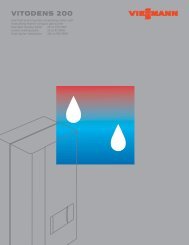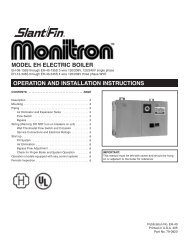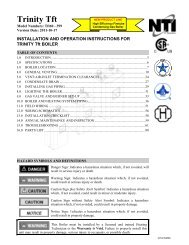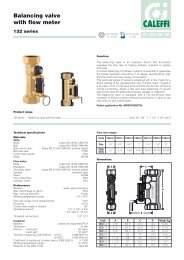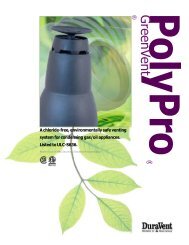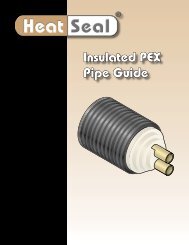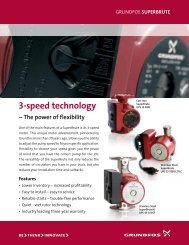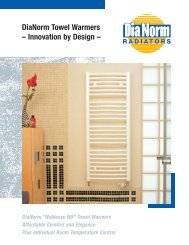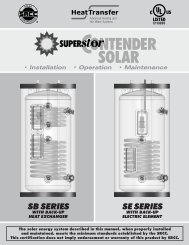Apricus Solar Water Heating System Installation and Operation ...
Apricus Solar Water Heating System Installation and Operation ...
Apricus Solar Water Heating System Installation and Operation ...
Create successful ePaper yourself
Turn your PDF publications into a flip-book with our unique Google optimized e-Paper software.
<strong>Apricus</strong> <strong>Solar</strong> Collector <strong>Installation</strong> & <strong>Operation</strong> Manual - USAEXT-30 Expansion Tank1(shipped in separate box)Expansion Tank Connection Kit(1 x Expansion Tank Mounting Bracket)1(1 x 1/2” FPT / 3/8” Barbed Onix)(1 x 1/2” MPT / 3/8” Barbed Onix )(2 x 3/8” Onix Ring Clamps)Expansion Tank Mounting Kit1(4 x 1 1/2” Wall Screws)(4 x 1 1/2” Wall Anchors)1 Expansion Tank Hose (black ONYX)7.4. Mountinga) Mounting Surface: The pump station can be mounted on most wall types using the provided screws. Ifbuilding structural members are not available a wooden board or the provided hollow wall anchors shouldbe used to provide secure attachment points.b) Pipe Layout: It is a good idea to layout all piping before securing the pump station in place, to make surethat everything fits properly <strong>and</strong> sensor cables can reach the tank, etc.c) To mount the pump station:Step 1. Mark <strong>and</strong> drill a pilot hole for center screw.Step 2. Mark <strong>and</strong> drill a pilot hole 6-1/4” left of center hole for controller bracket screw.Step 3. Insert steel sleeve in insulation around center hole.Step 4. Insert the plastic hollow wall anchors into the holes if building structural members are notavailable.Step 5. Using a Phillips head screwdriver <strong>and</strong> the appropriate screws <strong>and</strong> washers secure the pumpstation to the wall.7.5. Plumbing Connectiona) Leak Testing: Before commencing attachment of the pump station to the solar loop, the collector mustbe plumbed to the feed <strong>and</strong> return lines <strong>and</strong> an air pressure test to 116psi for at least 15min or in line withlocal codes <strong>and</strong> regulations. This is important because if there is a leak in the roof space it could causesignificant damage to the building. In addition, by doing the pressure test first, once the pump station isthen attached <strong>and</strong> fill <strong>and</strong> pressurization completed, piping on the roof <strong>and</strong> in the roof space can be ruledout if there is any pressure drop or leaks.b) Quick Connect: All pump stations provide 3/4” quick connect fittings both top <strong>and</strong> bottom. If you wish touse 1/2” or 3/4” flexible stainless steel piping for the solar loop, remove the quick connect fittings <strong>and</strong> useadditional fittings as required.c) Connection Process: Only st<strong>and</strong>ard hard drawn 3/4” copper pipe should be used for with quick connectfittings. If 1/2” or 3/8” copper is being used for the solar loop use st<strong>and</strong>ard adapters to reduce to that smallerpipe size.Step 1. Mark the copper pipe 1-3/8” from end of pipe.Step 2. De-burr the inside <strong>and</strong> outside of the pipe end to ease insertion <strong>and</strong> possible future removal.Step 3. Push the pipe into the push fitting until you can not see the mark.Step 4. Pull back on pipe to insure internal connection is secure.To remove pipe from push fitting, simultaneously push the plastic ring toward fitting while pulling pipe out offitting.Copyright 2011 – <strong>Apricus</strong> Inc Doc: A7-05.4.1.4-PB-1.9 Page 64 of 126


